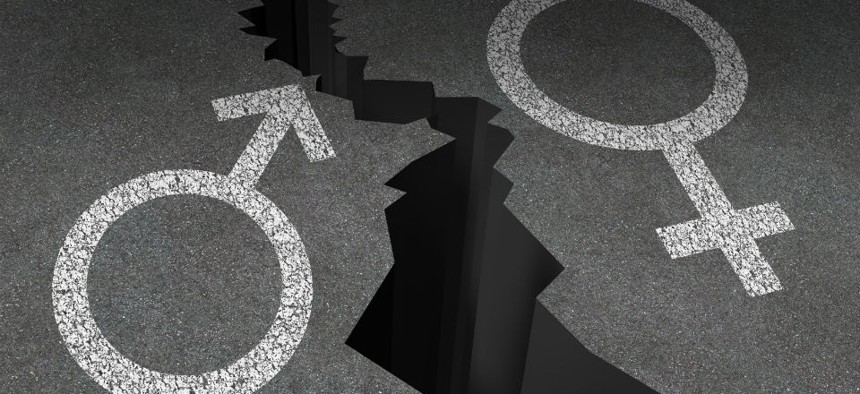Visualizing the Global Gender Gap
A new visualization charts the great lengths countries must go to achieve gender equality.
Measuring the expressions, and impact, of gender inequality, isn't always cut-and-dry. Last week, current interim Reddit CEO Ellen Pao lost a gender discrimination suit against her former employer, Kleiner, Perkins, Caufield, and Byers. There, she maintained, she'd been subjected to subtle, even unconscious biases from her male colleagues.
The lawsuit wasn't a total loss for gender-equality advocates, though; as Slate'sAmanda Marcotte pointed out, it started an important conversation about how discrimination needn't be blatant in order to exist. Yet it's clear that we need subtler ways of understanding the impacts of gender inequality—not just in the tech industry, but on the global stage.
Ri Liu, a Melbourne-based data visualization artist and web developer, has developed a striking new way to process different measures of gender inequality worldwide. "Close the Gap" charts how different countries compare when it comes to male and female participation in the labor force, in secondary education, in national parliament, and in income levels, using data mostly from the Gender Inequality Index from the U.N.'s 2014 Human Development Report.
"When I first found the dataset, I decided not to go down the obvious route of plotting out the male and female figures by country, because I felt that this was not what was most significant about the data," Liu tells CityLab by email. "I wanted to know 'what is the gap between men and women in these countries?', so instead I decided to focus on the space between the numbers rather than the numbers themselves. I wanted to make people feel uncomfortable when seeing the larger gaps with the bold red lines and feel a sense of closure as the gaps get smaller."
It is compelling, certainly, to see the lengths some 161 countries must go to achieve equality in these different dimensions. And in the case of labor force participation, Liu's visualizations might even tell the complete story. The Gender Inequality Index has been criticized on the basis that it doesn't account for unpaid labor or household labor, which suggests the gap might be even wider than it looks in all countries. Plus, the measure of parliamentary participation doesn't include seats women might (or might not) hold in local government.
These are just other examples of how challenging it is to gain a completely clear picture of gender inequality. But Liu's work is a step in the right direction, since, as she notes, there aren't many good visualizations out there that attempt to expose gender disparity—a subject that means a lot to her, as a woman of color working in tech.
"I have experienced intimidation and abuse of power and privilege in the course of my career," writes Liu, "but these instances are harder to prove and quantify. However, when you see the data, there is obviously a systemic problem of gender inequality in the workplace and elsewhere in society. It is usually the subtle things that add up rather than one significant event that create this barrier for women."
(Image via Lightspring/Shutterstock.com)



